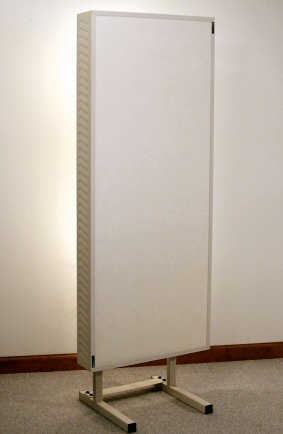My little dedicated room is appx 11' X 10' with a vault ceiling going to 13'.
I currently have the speakers into the room about 1/3rd in and firing towards the high
part of the vault. After much discussion with a'phile friends and MUCH head shaking,
we all believe that some room treatment may be called for. I currently have two upright
LP cases in the corners behind the speakers,to act as absorption. Speakers are the SF GH'S
which are working well in this space... BUT could they be working better with some acoustic
aids in the room.

The basic construction is typical S.Calif build... i.e. Wood Frame and dryrock sheeting.Floors are
carpet over concrete slab.
One of my a'phile friends tells me it is a lost cause
I suspect he's right but I sure hope not..
I currently have the speakers into the room about 1/3rd in and firing towards the high
part of the vault. After much discussion with a'phile friends and MUCH head shaking,
we all believe that some room treatment may be called for. I currently have two upright
LP cases in the corners behind the speakers,to act as absorption. Speakers are the SF GH'S
which are working well in this space... BUT could they be working better with some acoustic
aids in the room.
The basic construction is typical S.Calif build... i.e. Wood Frame and dryrock sheeting.Floors are
carpet over concrete slab.
One of my a'phile friends tells me it is a lost cause
I suspect he's right but I sure hope not..


